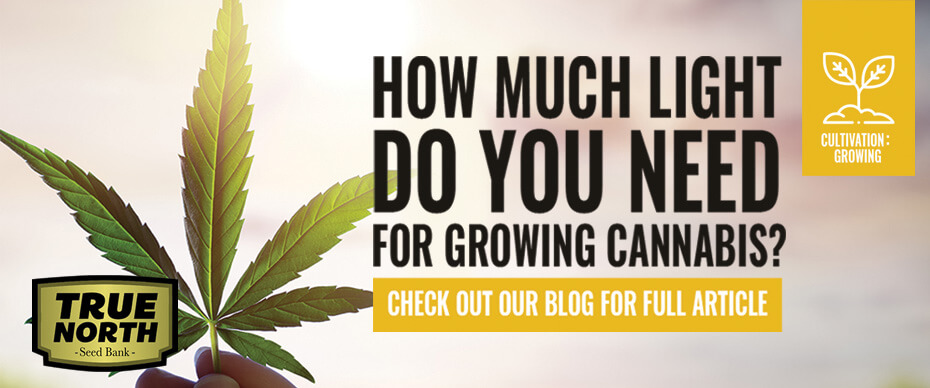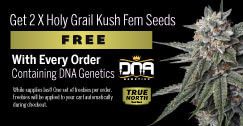
Cultivation experts verify how critical your “lighting” will determine numerous aspects of your final yield, regardless if the light is from the inside or outside.
Intensity, duration, color spectrum, etc., all factor in how well your cannabis will grow, how much it will yield, & when it will start making buds. While each cannabis seed strain requires a different light schedule, avg vegetation needs 18-24 hours & average of 12 hours for the flowering stage.
Let's take a look below at more specific elements of light that can improve your final yield.
Grow Light Coverage Calculator
While an easier way is to use just a Grow Light Coverage Calculator, it is vital to understand as a grower how much light and what type of light the cannabis plant may or may not need at each of these stages.
Even though a grow light calculator can speed up various calculations, understanding every aspect of your lighting system will help you optimize your lighting to meet the needs of your grow space.
Do Plants Need Direct Sunlight Or Just Light?
Cannabis plants can grow very well in either direct sunlight and from artificial indoor lights.
Depending on your perception of quality, as well as what master grower you ask, either method will produce quality yields.
Some argue natural fresh sunlight makes the best original cannabis, while other indoor growers feel more comfortable controlling every aspect of the lighting spectrum to maximize desired outcomes.
If you want to grow the cannabis plant indoors, you need to recreate sunlight artificially to get better results.
Plants that are grown outdoors usually require 10 hours of sunlight every day. This light should be direct, and the plants should not be kept in the shade.
If you are growing plants indoors, you need to provide them with light for an equal amount of time.
Lights used indoors are not as bright as the sunlight, but there are other ways in which this can be compensated.
Growing plants indoors can mean more controlled growth requiring different types and amounts of light in different stages.
When plants are seedlings, cloning and are in earlier stages, they grow best in blue light.
In vegetative stages, they are happier in blue light as well, but in flowering stages, red light suits the plant better.
Your cannabis plant also needs a mix of UVA and UVB light for more effective indoor growing.
Do Different Strain Genetics Require Different Lighting Schedules?
Most of the cannabis strains can grow well together and do not require different lighting conditions.
Many cannabis farmers want to grow different varieties and strains of cannabis together to diversify their crops.
Though there are optimal lighting schedules for each type of strain, the average light periods mentioned above can cater to the needs of the majority of standard lighting schedules.
Most varieties of the cannabis plant can grow pretty well if you give them more than 13 hours of sunlight or artificial light each day.
However, it is important to alternate between light and dark for optimal growth.
You also have to make sure that all plant varieties get each kind of light needed by your certain seed genetics.
Growing several strains of cannabis in the same grow space can also potentially increase overall cannabis yields.
The only downside is that growing different varieties together can increase the amount of time and effort you may have to put in.
There are special varieties of cannabis available that can grow on any lighting schedule and give you a full crop within three months if minimal lighting is given to the plant during this period.
If you don’t want to put in the required extra effort into certain seed genetics, there are cannabis strains that are better suited for an easier grow cycle.
How Much Light Should I Give Seedlings?
The light schedule for seedlings can be a challenging period for new growers.
For best results, we suggest that seedlings should be given 18 hours of light and 6 hours of dark.
Proper lighting schedules are achievable in both sunlight and indoor locations.
Most experts recommend the use of CFL bulbs to achieve these conditions.
In the light schedule for seedlings, they should be given blue light for the first 14 days.
Depending on the specific cannabis seed genetics, the seedling phase will typically last for 2 - 3 weeks.
Once the seedlings develop the famous cannabis shaped leaves, the seedlings can be placed under strong LED or HID lights.
Giving too much light to seedlings can lead to them sprouting crinkled and burnt up leaves.
At this stage, the cannabis plant is sensitive to light and can easily burn.
If the light is too low, they can grow lanky and tall and may not be good enough to produce a reasonable final yield.
While growing seedlings outdoors, there’s not much you can do about how much light they are getting.
Most farmers often keep the seedlings indoors for the first 14 days to keep them safe from elements and too much light.
But you can easily grow them outside as well if the temperatures stay between 68 to 77 degrees Fahrenheit.
How Much Light For The Vegetative Stage?
Standard cannabis cultivation advice recommends cannabis plants in a vegetative state should get 18 hours of light.
This is commonly referred to as the 18/6 schedule.
Many farmers even keep the plants under 24 hours of light, known as the 24/0 schedule.
But the optimal requirement at this stage is 18 hours.
Either schedule can be used for both indoor and outdoor crops of cannabis with nearly every seed genetic.
Beyond the lighting timer schedule, new cannabis cultivators can be even confused with what is the best light spectrum for vegetative growth.
At the vegetative stage, the best light spectrum for cannabis plant growth is the blue light with a wavelength between 450 to 495 nanometers.
Being able to manipulate the vegetative stage growth can lead to higher yields.
When the plants are in this stage, the more light (intensity) they get, the bigger they will grow.
The vegetative stage is also significant as it can decide when your crop will be ready.
By keeping the cannabis in more light during this stage, you can prolong the length of time the crop will take to grow and get bigger.
Not only light but darkness also plays a significant role in cannabis plant growth.
For cannabis plants to go into the next stage, they require 12 hours of uninterrupted darkness.
But for the vegetative state, the darkness level does not affect crop outcome.
How Many Hours Of Light Do You Need For Flowering?
For the flowering stage, the cannabis plant needs only 12 hours of light.
In this stage, darkness is much more important to trigger certain reactions in the plant that lets it know that it’s time to start flowering.
For the flowering to begin, the plants need 12 hours of darkness. There should be no breaks in between where they are exposed to light.
This leaves only a 12 hour window in which the plant can be exposed to light.
During the flowering stage, it’s better to exceed the dark time compared to the light time.
After the plants reach the desired length in the vegetative stage (ideally 60 days or 8 weeks - depending on the seed genetics), switching to a 12/12 light schedule can begin the flowering stage.
With blue light being the best for vegetative growth, the flowering stage requires red light at wavelengths of 620 to 750 nanometers.
Cannabis plants grown outdoors will naturally start flowering as the sun gets closer to a 12/12 cycle.
Outdoor light patterns that trigger your cannabis in the vegetative state to start flowering will typically start happening after June 21st -- when days start become shorter and nights become longer.
Here the farmer has to take care and prevent the plants from even being exposed to neighboring outdoor flood lights or street lights during their 12 hours of darkness.
Any potential interruption can ruin the crop cycle.
Ultimately, lighting can get complex or remain as simple as taking advantage of the natural sunlight during the growing season.
Otherwise, you’re able to use indoor growing light technology to produce a remarkable high quality and hefty yield.

About the author: Joe Powers
After an incident in the military, in 2011, Joe Powers began investigating cannabis by talking with industry leaders. In 2016, Joe launched Hemp Writer with its first publication in clarifying disinformation on specific updates to certain federal CBD laws.
Upon calling out a leading cannabis law firm spreading dis-info, Hemp Writer established itself as an authority in clarifying updated information emerging from the cannabis industry. Joe continues charging forwards with increasing momentum to continue fulfilling his vision of SHARING ACCURATE CANNABIS INFORMATION.










